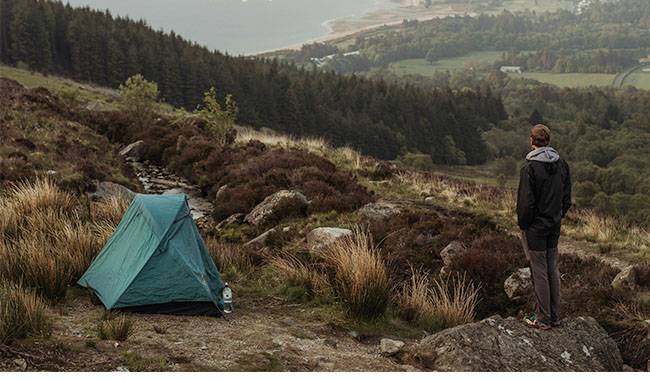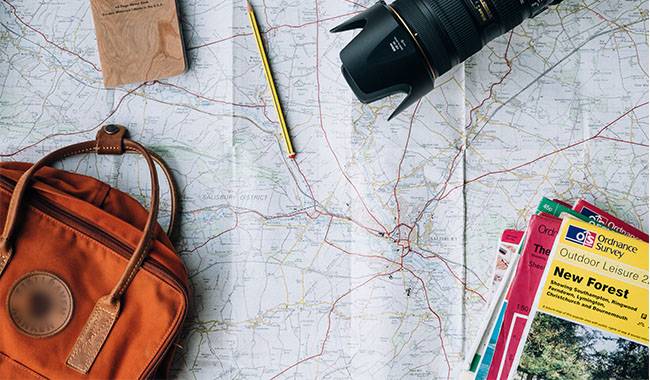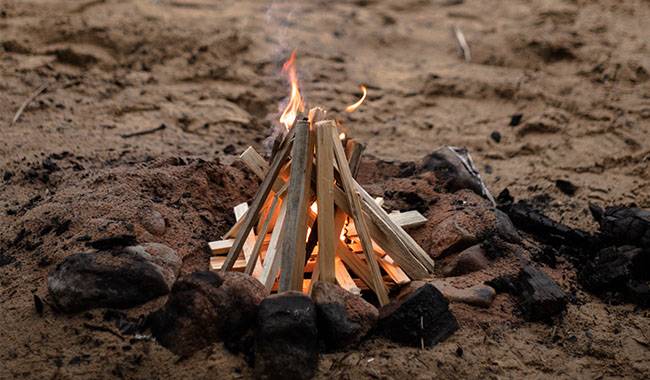
Hello tourists and travelers! There is perhaps no better opportunity to enjoy good weather and friendly company than to get out into nature. Some people go to the nearest forest park, others are in few moods during their breaks, they explore long routes around the country with big backpacks. We are drawn to the same idea: to get away from our usual life in the heart of pristine nature, to renew ourselves mentally and physically, to rest and gain strength. That’s why it’s so important to preserve nature and keep thriving so that future visitors can find the places we’ve been better than ever before. You will learn more about The Rules to Read and Follow When Traveling by LCNOutdoors article.
In this article from LCN Outdoors, you’ll find some simple tips to reduce our impact on the environment and become grateful stewards of our commonwealth. These rules apply to all-natural areas from the local to the state level.
Some of them may seem overly picky or far-fetched, but you need to understand why they happen. With the growing popularity of outdoor activities, increased visitor traffic, and the advent of accessible and well-marked routes, the pressure on the ecosystems through which they pass has increased dramatically. If only a few dozen fairly accurate hikers pass along the trail each year, it’s unlikely that this will have any negative impact on the environment. But imagine if a few thousand people passed through it during the season, as happens in the Alps or on long-distance hiking trails in the United States, Spain, Portugal, and other countries.
Therefore, many of the tips given here are based on the principles of the Leave No Trace movement. This public organization originated in the United States to help all outdoor enthusiasts reduce their impact on the environment when hiking and traveling. As you know, there are world-famous “real hiking” trails in the United States that attract tens of thousands of visitors every year. “Thru-hiking”, or “Through-hiking” – extra-long, technically simple hiking trails, 2-3 thousand kilometers in length.
Tip: Thru-hiking, or through-hiking, means the act of hiking established end-to-end trails or long-distance trails continuously in one direction.
Plan Ahead And Prepare For Your Trip

No matter how adventurous a hike may seem, be sure to familiarize yourself with the area of your future trip and the discovery rules that dictate the relationship to the environment:
- What is the length of the route?
- How difficult will it be?
- What are the rules governing this area?
- What dangers should you be aware of?
- which animal species are often found in the area?
- Where are the water sources and permitted parking spaces?
The answers to these questions will absolve you of the responsibility of not knowing the laws and details of the area, help you plan your trip carefully and bring only what is necessary so that your trek does not turn into a test.
Tip: Tourism is one of the largest social movements in the world. More than 100 million people in Europe, North America, Australia, and New Zealand love to hike and travel.
Join local travel clubs and online communities in the areas you plan to travel. Ask for tips and follow the news to get answers to these questions and try to track upcoming routes. Use a satellite navigator (GPS ) or download the mobile app – Route Guide – to your smartphone (check Google Maps, Google Flights, Hotels, Uber, Yelp, Travelzoo, etc.).
In the case of the Caucasus National Natural Biosphere Reserve, for example, you can familiarize yourself with the rules of behavior in the wild.
Only Take Photos And Leave Only Footprints
Take only photos as souvenirs. Picked flowers and plants won’t make it to your house, but picking them will definitely hurt the ecosystem as they are part of it.
To learn how to take cool photos while camping, watch our Travelers Club talk or listen to the audio version of the podcast”.
When do you want to take a rock or a flower home with you, or pick it up to take a photo to remind you of your trip, think: What would happen if everyone followed that impulse?
Leave only your footprints on the ground. Believe me, your inscriptions and messages on the trees and rocks have little cultural or educational value to visitors, they just interfere with the aesthetics. And of course, no trash, no food! That’s what we do.
Always remember that any action you take is a role model and an extremely visible one at that! Critically evaluate any behavior that is unfriendly to nature. Imagine that the people who follow your example will do exactly the same as you do.
Walk-in Groups
Travel in small groups to minimize your impact on the environment. In addition, this will help reduce noise disturbance to animals and other campers.
Try to stick to trails and camping areas to prevent damage to the free-growing vegetation around you.
Move at regular intervals on dirt and soft trails, as well as on firm slopes or mulch to minimize trampling and disturbance of mulch.
Avoid walking side-by-side to avoid damage to trail edges and subsequent soil erosion and changes in stormwater runoff.
Camping In Designated Areas
Do not pitch your tent in an area that shows obvious signs of recent use. Choose a location that has been restored. If you plan to camp for more than one night, move your tent to a new location to minimize impacts to vegetation and ground cover.
- Don’t create thoroughfares in your campsite: choose a variety of routes to water sources, lookouts, rest, and cooking areas.
- Don’t take more territory from nature than you need for yourself: don’t place extra furniture or dig trenches.
- Use tent slings and trekking poles to dry your belongings.
- Camp at least 165 feet (50.5 meters) from a water source.
- Do not use synthetic detergents to wash dishes or laundry. Use natural ones – fine pebbles, mustard powder, chalk, or special biodegradable detergents for washing.
Follow a simple algorithm when washing dishes to save water and special or natural detergents.
- Use a spatula to remove stubborn dirt from dishes.
- Wet the sponge and add a biodegradable detergent if needed.
- Wipe the dishes with a sponge.
- Rinse with water.
- Wipe with a dry cloth.
Wet and dry clothes are also suitable for cleaning dishes, especially greasy stains. With just one wipe, the set will be as good as new and the smell will be gone by the next meal. This method works especially well when the water is warm and the temperature is low when people have little desire to wash dishes.
Lightweight folding buckets can be used for washing and dishwashing. There are now a large number of these available on the market in different liter sizes. Used water should be disposed of away from the water source by pouring it into a pit or throwing it away.
Do not wash dishes or wash things in lakes or streams. Do it at least 165 feet (50.5 meters) from a body of water: even biodegradable soaps can harm the organisms that live there and drink from the water source.
Proper Waste Disposal
Always take your trash with you. If you bring something into nature, it’s your responsibility to take it away! Many nature preserves and parks do not provide recycling bins, making campers responsible for their own waste.
Consider packing your food ahead of time. Perhaps repackaging them at home will reduce the amount of trash in the future. A detailed meal plan and a calculation of the food needed for each meal will help greatly. Use collapsible reusable dishes and packaging to save space in your backpack and get rid of unnecessary trash. Tin cans should be flattened before packing to achieve a smaller volume. Dry garbage is best contained in special Ziploc bags or resealable plastic bags to reduce odors. Avoid using disposable packaging and utensils.
Get rid of it by spreading water and biodegradable waste around.
Pick up the trash you see, even if it’s not yours.
The most effective and meaningful role in respecting the environment is played by a living example. Both positive and negative.
Respect For Wildlife
Respect the wildlife and all the biodiversity of the area you are traveling in! If you plan to visit a special reserve, don’t take your pets with you. Their presence and smell can scare away wildlife and disrupt their usual migration routes.
Don’t scare wildlife, don’t shout or chase them, and don’t destroy their homes. Remember, this is their home and let them live in it peacefully. Whatever your beliefs, don’t feed the wildlife!
Don’t leave leftovers on the trail, let alone in any form in the camp. Otherwise, the animals will quickly become addicted and dependent and lose their hunting instincts and habits. As the camping season comes to an end, the loss of self-sufficiency can be dangerous for them. In addition, leftover food attracts wildlife to popular tourist attractions and campgrounds, where they pose a potential danger to vacationers. If dangerous animals, such as bears, become a nuisance to tourists by returning to harvest areas (trails, campgrounds, or unauthorized garbage dumps), rangers may have to be eliminated by game wardens. A well-fed bear will often turn out to be a dead bear. To avoid carrying extra food, work out your menu for each meal on each hiking day on a piece of paper beforehand.
Minimize The Impact Of Campfires On Nature

Campfires are prohibited in most camping and hiking areas. So be sure to familiarize yourself with the rules of the area you will be traveling in.
Using small portable burners and gas will make your dinner faster and cleaner than a campfire. This will reduce the impact of burning wood on the atmosphere and ground cover, and reduce your chances of starting a forest fire. The use of portable gas burners is becoming more popular as tourism grows. They are weatherproof, compact in size, and certainly great for cooking comfortably on your lap and in your tent if properly ventilated.
If you can’t live without a campfire, the following rules should be followed.
- Build a fire on an old fire pit.
- If not, carefully remove the sod and build a fire. Before leaving the campfire, re-cover it with sod.
- Build the fire 40 inches (1 meter) or more away from trees and tents.
- Avoid building campfires under dense coniferous trees.
- Clear leaves, branches, and dry grass from the proposed campfire site.
- Use special baffles and trays, if available, for non-contact campfires that are placed on a base of footstones.
- Another option, although it has nothing to do with the mountain. We build a base on a piece of fireproof cloth or an old tarp with ordinary sand and build a fire on it.
Only dry, “dead” firewood lying on the ground or removed from trees is used for kindling. Dry trees and shrubs cannot be sawed, cut down, or otherwise affected, even if you think they are past their prime. Their trunks and roots are an important link in the landscape, connecting the flora and fauna of the area.
Avoid burning industrial waste. This can damage the soil, water, and air inhabitants. Control fires and keep them small.
Before leaving a campground or leaving a campfire unattended, make sure it is extinguished.
Be Considerate Of Other Visitors
Our behaviors and habits are shaped by our environment and interests. Through our actions and examples, we can influence social consciousness by infecting aspirants with the concept of healthy eco-friendly tourism.
Set an example for others! Newcomers who have positive experiences in the wilderness and see positive examples of how to protect pristine conditions will admire nature and become nature lovers and protectors.
Try not to leave a trail of lingering on your trip.
Adhere to the rules of etiquette. If possible, spend the night where allowed and stay off the trail so as not to disturb other hikers. Say hello to people on the trail and let those walking uphill pass you.
When posting photos of unauthorized trails on social media and other resources, remember to tell your followers and readers that these places are restricted or completely off-limits. Inadvertently, you are putting other visitors and the environment in real danger.
Finally, the most important rule is to align all the others, both included and excluded, in this list. Strive to keep the places you have visited in the same condition as they were before you came, if not better!